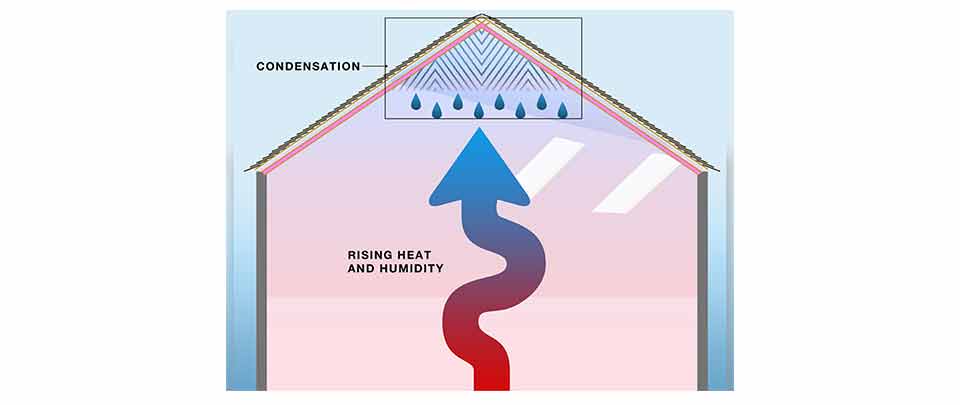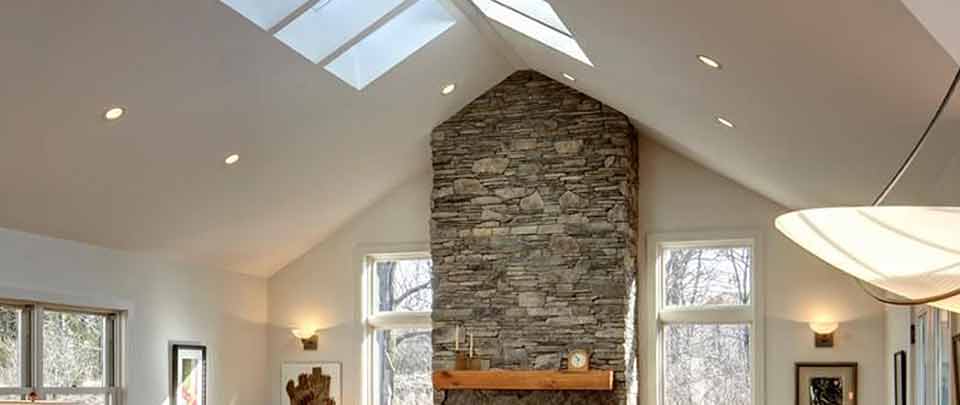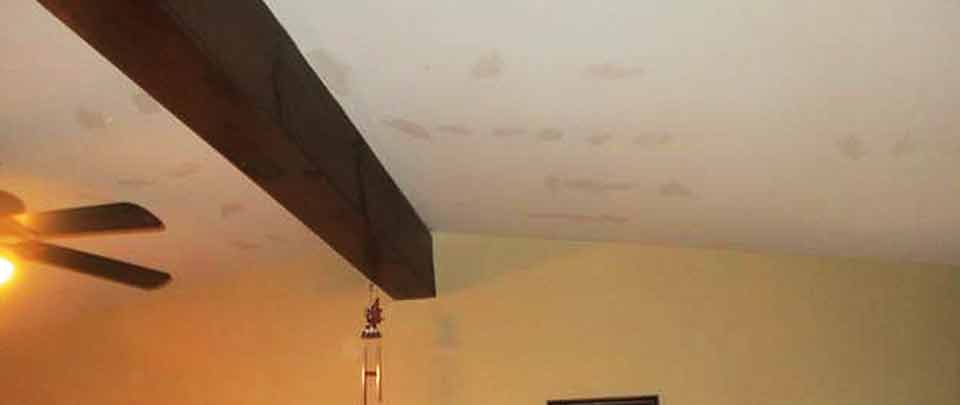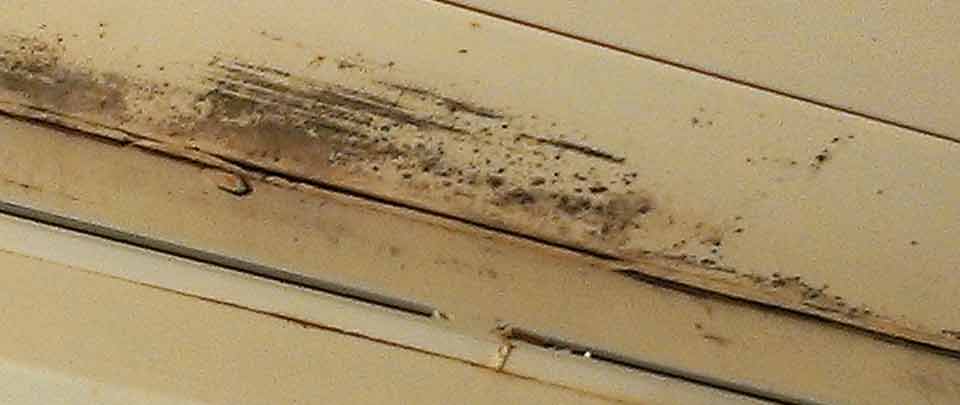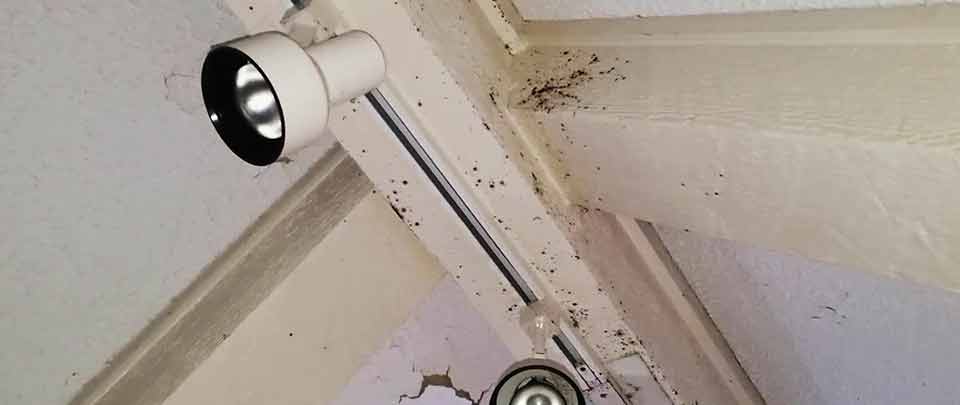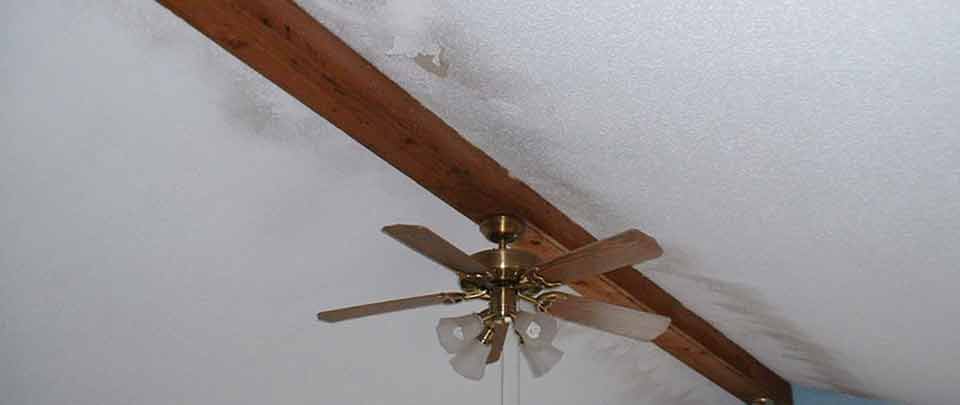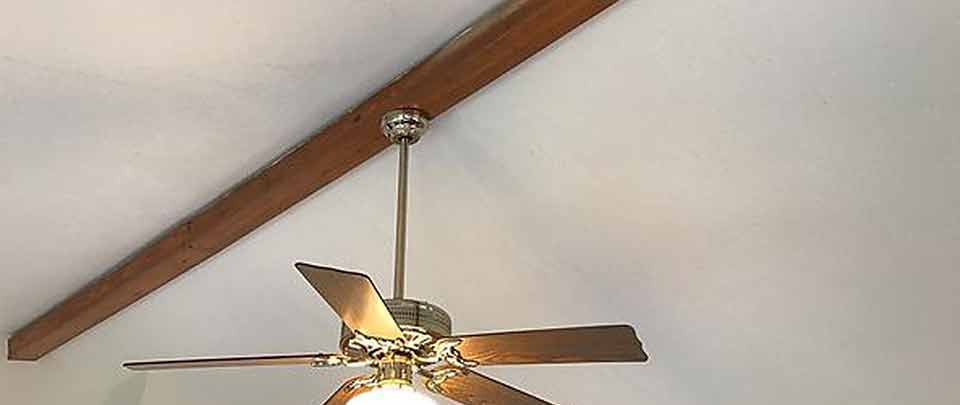Condensation on a Vaulted Ceiling
Vaulted ceilings are a great way to give a space an expansive feel, even if the space itself is relatively small. Turning the interior of a hip or gable roof building into a vaulted ceiling immediately gives it a sense of grandeur and space, but it doesn’t come without its challenges—for example, condensation.
Condensation is a relatively common problem with vaulted ceilings and one that is an understandable cause for concern; water can damage your property, stain your ceiling, and even drip onto the floor where it becomes a potential safety hazard. But how do you deal with this problem? In brief, the way to deal with condensation on a vaulted ceiling is to ensure you have adequate insulation throughout your roof and try to reduce the humidity in your building. If you’d like to know why taking these steps can lead to your condensation woes being taken care of, keep reading.
What Causes Vaulted Ceiling Condensation?
Condensation on a surface that borders with the outside of the building is usually caused by the warm, moist air inside the building meeting the surface, which is cooled by the air outside. It is usually on the ceiling because warm air rises, so the first surface it will encounter will be the one above. In an area with a vaulted ceiling, there is only one surface to encounter on the way up, and that is the ceiling itself. When that warm, moist air hits the ceiling, it cools, condenses, and leave moisture in its place.
How to Stop Vaulted Ceiling Condensation
Since the condensation is caused by the warm, moist air inside being cooled by the roof, which is colder due to being in contact with the outside, there are two approaches you can take, though they needn’t be exclusive—you could use both methods in conjunction with each other.
Lower the Humidity
Though it is easily the least efficient way to cut down the condensation on your vaulted ceiling, you can help matters by reducing the amount of moisture in the air. If there is less moisture in the air, there will be less condensation on the ceiling, since that is where the condensation is coming from.
Of course, you will never be able to get all of the humidity out of your property—merely breathing adds humidity, not to mention things like steam from hot water. And, even you could get all of the moisture out of the air, it would make for a very uncomfortable experience living in that building.
Still, installing a dehumidifier in the problem areas of your property can help reduce the amount of condensation you find on your ceiling.
Improve the Insulation in Your Ceiling
The next thing you can try is improving the insulation. Since the problem is caused by the warm air encountering the cold ceiling, you can help matters by making your ceiling less cold.
It only gets cold because the cold from outside is able to permeate your insulation easily enough to make the inner surfaces cold. If you were to improve the insulation, the roof would be better at keeping the cold out, and the temperature differential at the ceiling would be less drastic. You will never be able to completely stop the transfer of heat through the ceiling, of course, but the better your insulation is, the less of a problem condensation will be.
Opt For Foam Board Insulation
This option is not exactly an easy fix, but if you are willing to have the shingles or tiles on your roof lifted, you could install foam board insulation on the outside of the roof. This will allow you to use the space on the inside where your insulation would otherwise have gone—between the inner ceiling and the outer roof—as a ventilation space, which gives your property a safe way of transferring the heat outside without it creating condensation.
Of course, this is not a small task. This option may be more appealing if you are already having your roof stripped for anyway, perhaps for some repair work, or renovation.
Why Don’t Non-Vaulted Ceilings Get Condensation?
If you take two identically shaped buildings—let’s say a typical gable roof house of the basic shape that a child would draw—but one of them has a vaulted roof, and the other doesn’t, the vaulted roof house may get condensation on the ceiling, but the non-vaulted house won’t. Why is that?
The answer is ventilation.
With a non-vaulted roof, a ceiling separates the livable areas of the house from the attic. This attic—or roof void—acts as a ventilation conduit. Since no people are living in that part of the building, it doesn’t matter that there is constant airflow travelling through it. So, with the careful use of intake and exhaust vents, the air is circulated through the roof void. That air works to smooth out the temperature differential between the rising warm air and the cold roof, but it also whisks that warm air away before it has a chance to condensate.
A vaulted ceiling, depending on how it was built, may not have a void where roof ventilation can take place, and so the warm, moist air condensates when it encounters the roof. It is possible to build a roof void into a vaulted ceiling by framing the internal ceiling far enough away from the roof, but this would involve a lot of disruptive work to install retroactively and would be much more suited to a new build.
Final Thoughts
Nobody wants to see condensation on their walls, but don’t panic if it happens to you. If the area is relatively small, or if it is very localised, a dehumidifier could be enough to deal with it. If it is localised, however, it might be worth considering why it is localised in the area that it is. Perhaps you have an air conditioning unit blowing in that area, for example.
If all else fails, you can put your roof through some disruptive construction work to fix the problem, but there are less invasive ways to deal with it.

